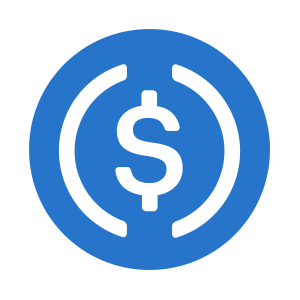- Back to menuNews
- Back to menuPrices
- Back to menuResearch
- Back to menuConsensus
- Back to menuSponsored
- Back to menu
- Back to menu
- Back to menuResearch
- Back to menuWebinars & Events
- Back to menu
About USDC
USD Coin (USDC) is a fully reserved stablecoin pegged 1:1 to the US dollar, ensuring price stability through a reserve backed by cash and short-duration U.S. Treasury instruments. These reserves are held by regulated financial institutions like The Bank of New York Mellon and managed by BlackRock via the Circle Reserve Fund. Circle, which independently manages USDC after its initial development with Coinbase under the CENTRE Consortium, ensures transparency through monthly audits by Deloitte. USDC operates on 16 blockchains, including Ethereum, Solana, and Polygon, offering wide liquidity and accessibility. It is used in cross-border payments, DeFi, and as a hedge against cryptocurrency volatility. It provides a stable alternative for remittances and exposure to the U.S. dollar for non-U.S. investors. USDC maintains its 1:1 peg by minting and burning tokens based on USD deposits and redemptions, offering secure and regulated digital dollar transactions.
Launched in late 2018, USDC is designed to maintain a stable value unlike other typically volatile cryptocurrencies. But even stablecoins such as USDC can still be prone to mild changes in price.
USDC’s price spiked to an all-time high of $1.19 in May 2019, and noted an all-time low of $0.891848 in May 2021. Changes to supply and demand are the main reason stablecoins move off their $1 peg. During bullish market cycles, demand for stable value assets like USDC drops. That causes the price of USDC and other U.S. dollar-backed stablecoins to fall beneath one dollar. Overall, though, USD coin has maintained long periods of stability at $1.
There is no maximum supply of USD coin, as new tokens are issued based on demand.
When a user redeems USDC for $1, the team burns (permanently removes) the appropriate amount of USD coin from circulation, and funds from underlying reserves are transferred to the client’s external bank.
USD coin serves to tokenize U.S. dollars on a blockchain. The service is a collaboration between crypto exchange Coinbase and financial services provider Circle. Their shared vision to bring U.S. dollars onto a blockchain means traders can preserve their portfolio’s dollar value during periods of high volatility without having to exchange their crypto assets for a fiat currency. It also allows for tokenized dollars to be sent across a blockchain network – something that’s much faster and cheaper than sending dollars through the legacy banking system.
USD coin can be generated only by sending USD to the token issuer’s bank account and interacting with the smart contract on the blockchain one wants to use. To redeem USDC for USD, the process is reversed.
USDC is found on multiple public blockchains, including Ethereum, Solana, Algorand, Stellar, Tron and Hedera. The token is interoperable with all features on the public blockchains it resides on, including decentralized finance (DeFi) and smart contracts.
